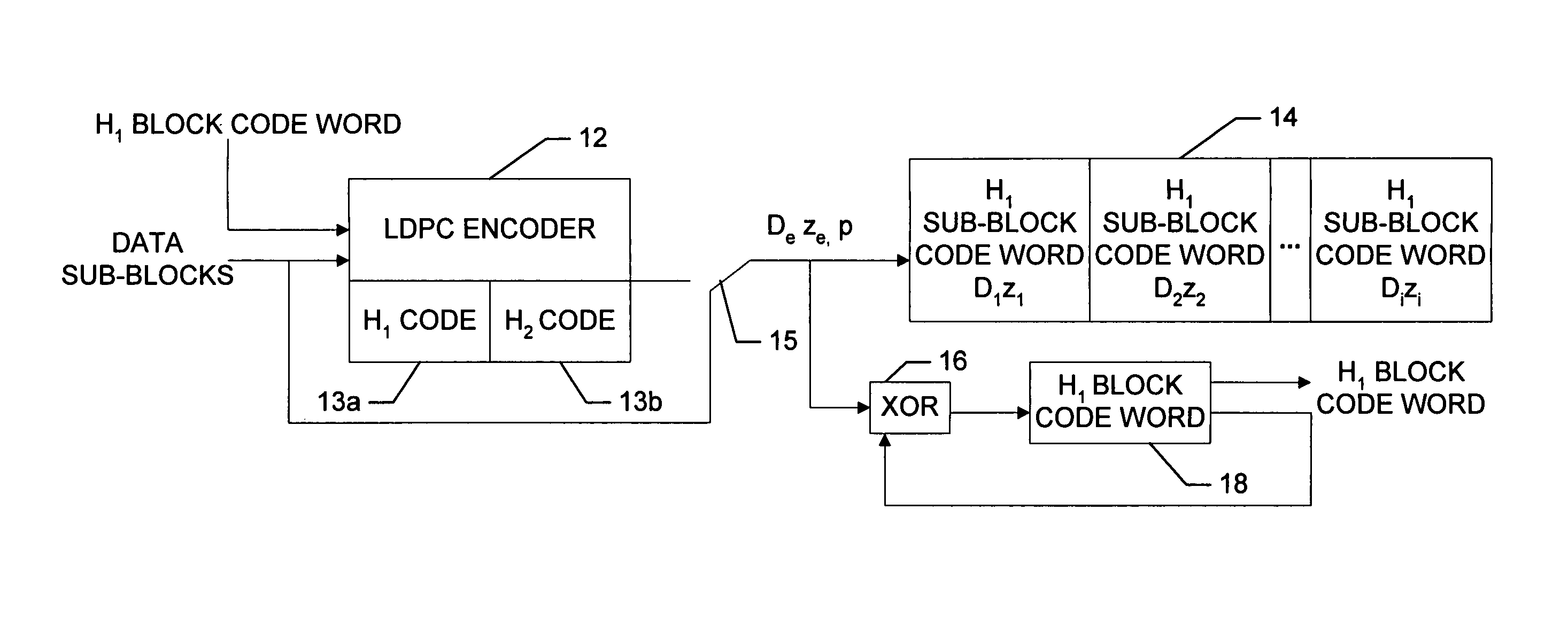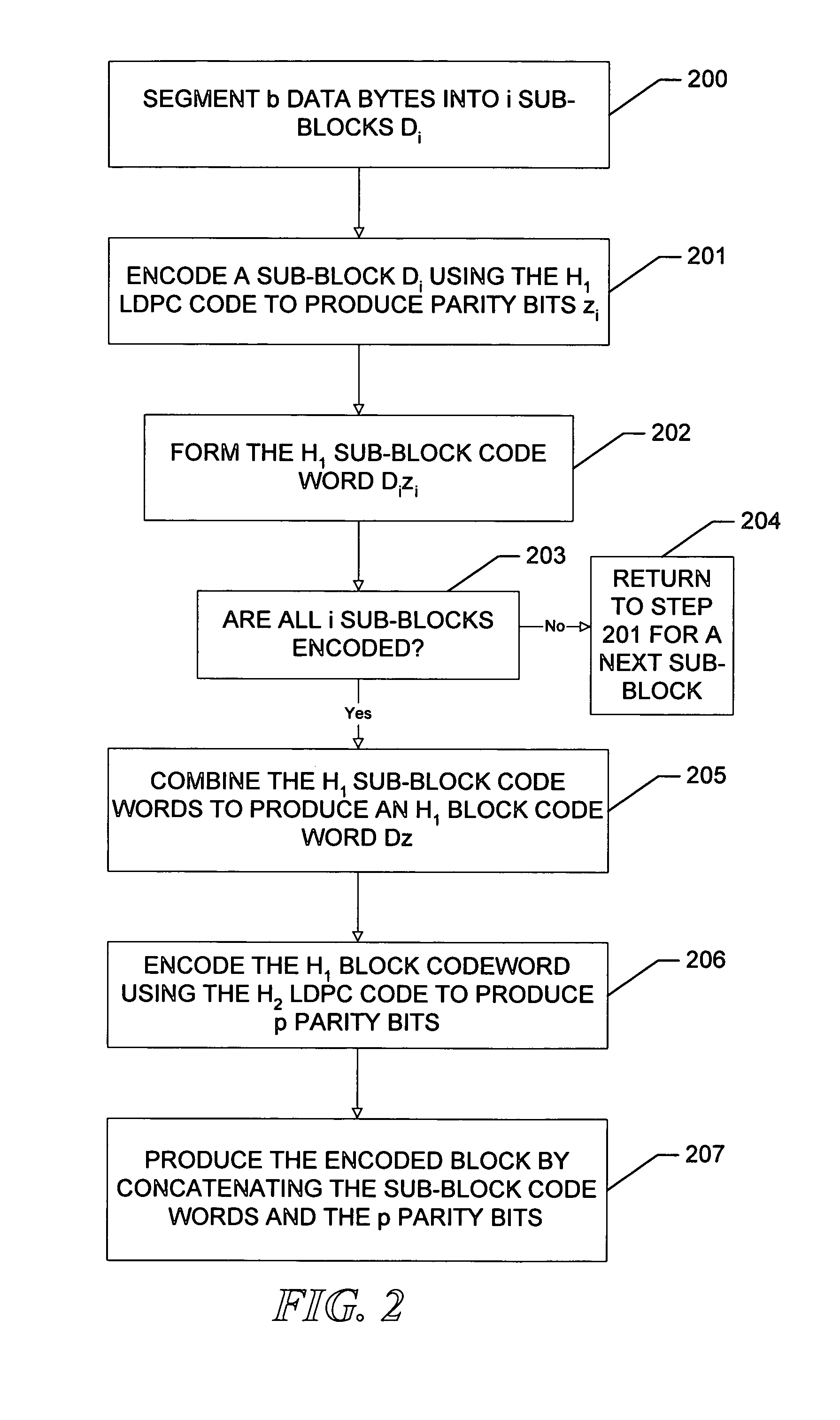Nested LDPC encoders and decoder
- Summary
- Abstract
- Description
- Claims
- Application Information
AI Technical Summary
Benefits of technology
Problems solved by technology
Method used
Image
Examples
Embodiment Construction
[0026]Referring now to FIGS. 1 and 2, a data processing system includes an LDPC encoding sub-system 10 that utilizes an LDPC encoder 12 to produce an encoded block that contains b data bytes and associated redundancy bits. The LDPC encoder 12 separately and independently encodes the b data bytes as i data sub-blocks, D1, D2, . . . Di using an LDPC code H1, to generate corresponding sub-block parity bits z1, z2, . . . zi that together with the data produce H1 sub-block code words D1z1, D2z2, . . . Dizi. The encoding sub-system thus segments the data into i data sub-blocks in step 200 and in steps 202-204 separately and independently encodes the respective data sub-blocks to produce the corresponding sub-block parity bits and form H1 code words Dizi. The switch 15 operates to provide the sub-block data bytes followed by the corresponding sub-block parity bits to the buffer 14.
[0027]The encoding system next combines the H1 sub-block code words to produce an H1 block code word Dz (step ...
PUM
 Login to View More
Login to View More Abstract
Description
Claims
Application Information
 Login to View More
Login to View More - R&D
- Intellectual Property
- Life Sciences
- Materials
- Tech Scout
- Unparalleled Data Quality
- Higher Quality Content
- 60% Fewer Hallucinations
Browse by: Latest US Patents, China's latest patents, Technical Efficacy Thesaurus, Application Domain, Technology Topic, Popular Technical Reports.
© 2025 PatSnap. All rights reserved.Legal|Privacy policy|Modern Slavery Act Transparency Statement|Sitemap|About US| Contact US: help@patsnap.com



